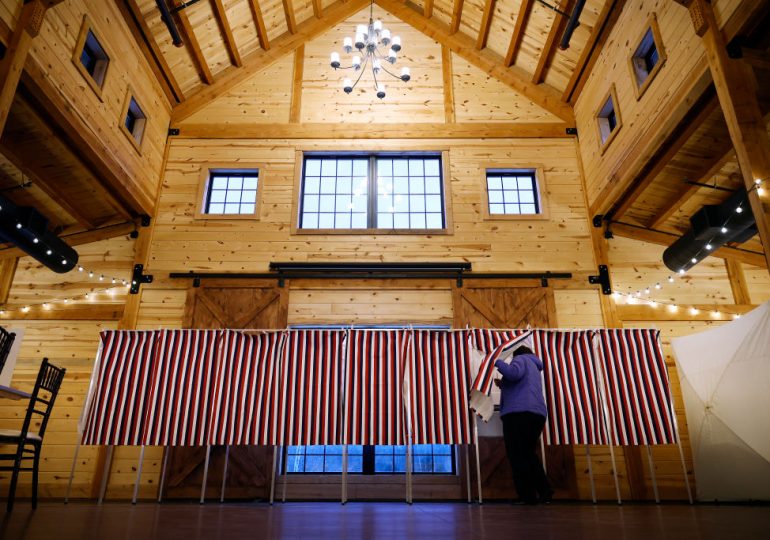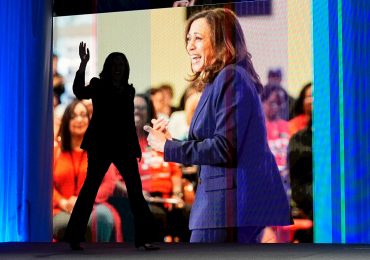For two decades in Asia and the former Soviet Union, I worked for democracy-promotion organizations, a central aim of which was bolstering democratic political parties. I trained them on internal party structure, platform development, constituent outreach, and, of course, candidate selection. With typical American hubris and pride, I often nudged parties toward the inclusive American primary system as a model for selecting candidates. “Primaries are the most inclusive and, theoretically, democratic,” I’d think to myself. “They allow everyday citizens to choose candidates rather than limiting this decision to party leaders.”
[time-brightcove not-tgx=”true”]
Expanding candidate selection to include more stakeholders made perfect sense. In the countries where I worked, a small group of party leaders selected candidates without transparency or competition, frequently based on the candidate’s financial contributions. This opaque process failed to provide nominees who were representative of or accountable to the public, stifling the competition of ideas and values. Unsurprisingly, in turn, the public disdained parties and politics.
In one series of workshops I organized in Bangkok for party leaders from eight Asian countries, I brought in a former American politician who lectured on the virtues of “letting the people decide,” extolling the glory of the Iowa caucuses and grassroots primary campaigns. Returning to the United States, however, I confronted our own profound distrust of politicians and our democratic system. Is our primary process truly exemplary?
Despite being more inclusive than other democratic systems, American primaries often fail to produce the most representative, issue-focused, or accountable candidates, frequently tilting the scale towards extremism, eroding consensus and civility. In 2016, many Republican leaders watched in horror as a former reality television show host descended an escalator to announce a campaign in which he deviated significantly from Republican orthodoxy on multiple policies, such as foreign policy and national security, hurled never-heard-before insults at and lies about his fellow GOP competitors, and courted the most hateful and aggrieved elements in the party. Polling in early 2016 by the Washington Post showed Trump had a large net negative favorability among Republicans.. In fact, he won only 44% of the primary voters, but it was enough to seal the nomination.
American parties, unique among democracies, heavily favor public participation. But do our candidates reflect the general population better than other democracies? That’s a hard no. Our representatives are predominately white, male, Christian, and rich. The individualistic nature of our primaries requires connections and money, as with many other majoritarian races elsewhere. Women are far better represented, for example, in countries where the party determines candidates, as in Norway or Sweden and proportional electoral systems, which allows the party to place women in winnable spots on the candidate lists.
Does the inclusivity of our process yield more accountable candidates? That’s another no. They are certainly not beholden to the collective ideas, values, or platform of the party. The Republican Party, for example, has such compromised relevance or control that the Republican platform in 2020 was essentially ‘whatever Donald Trump says.” Though many bemoan our extreme “partisan divide,” it is more tribal than partisan, based on competing political and cultural realities. The Right is dominated by a cult-like loyalty to a leader, regardless of his position on traditional party issues (small government, foreign policy hawkishness), who will be “strong” and “fight” against perceived grievances and others. The Left is mobilized around being against this leader, with indeed some issue differences on abortion, Ukraine, and guns.
Read More: The Biden Campaign Must Be About More Than Trump
Moreover, candidates aren’t necessarily more accountable to their district’s majority. Primaries only require candidates to compete for a minority of voters—the most fervent party base that turns out. This provides an opening for extreme, charismatic figures, rather than consensus-building and coalitions. They are thus accountable to a small party base and to their donors, as primaries require extensive individual fundraising, unlike party selection. After securing this small group of base voters in the primary, most candidates face zero competition. In fact, only 10% of our House seats, according to a 2022 Fix Our House Redistricting report, are considered competitive thanks to a two-party system, gerrymandering, and majoritarian, winner-takes-all elections.
Much hinges on the party’s inherent quality—its internal democracy, representativeness, and inclusive decision-making—as well as the public’s trust in the party system and diversity of party options to determine whether party-led selection is a form of negative gatekeeping or a healthy practice. Without some gatekeeping, the party’s fundamental purpose is under question. Ideally, parties should serve as a collective, aggregating ideas, values, and policies of constituencies to advance a cohesive, shared agenda and prevent the descent into individual-driven chaos and appeals to extremism.
There is nothing stopping American parties from self-reform to rethink the balance. Introducing more rigorous candidate screening prior to primaries could be a start. This would likely upset voters on both sides of the aisle given the low trust Americans have in political parties.
Parties could also certainly abandon the winner-takes-all approach in favor of proportional voting in all state primaries, as the Democratic Party has done. For example, if the Republicans used proportional allocation in South Carolina in 2016, Trump’s 33% would not have given him all the delegates—it would be divided proportionally with Ted Cruz (22%) and Rubio (22%). Preferably, parties could adopt ranked-choice voting (already used in some cities and states), allowing electors to sort their preferences, reallocating vote choices according to these rankings if no candidate achieves a majority. This system encourages candidates to seek broad-based support, ensuring the eventual winner represents a majority preference. For instance, the Republican Party employed ranked choice voting in Virginia’s gubernatorial selection process, which led to Glenn Youngkin’s nomination over the more extreme candidate, Amanda Chase. Regrettably, recent moves by the GOP, possibly under pressure from the Trump campaign, double down on a winner-takes-all approach.
There is no Goldilocks formula for the “best” party nominating process. It’s more about finding a balance among various factors with a focus on outcomes. Candidate selection must not only be inclusive but also promote broad societal representation, coherent policy goals over individualistic agendas, and civility and consensus over extreme minoritarianism. Such a gargantuan task is akin to changing the course of an entire naval fleet. Reimagining America’s candidate-selection process into one that fosters broad acceptance is an ambitious but necessary endeavor that could redefine the trajectory of our democracy.
Leave a comment








